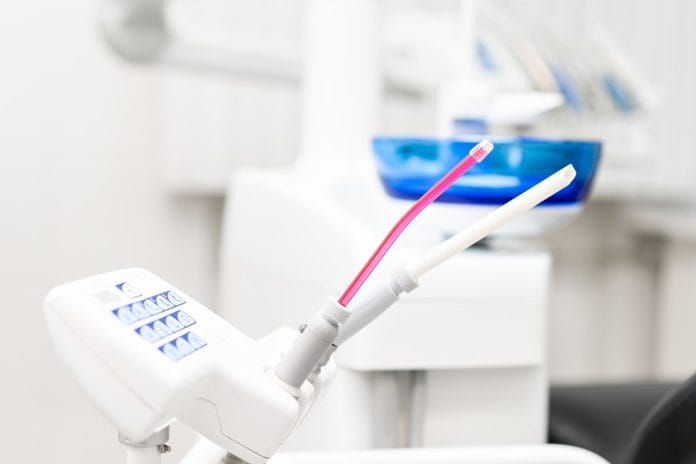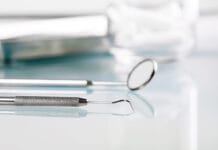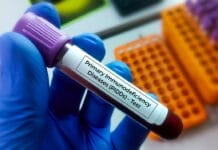Question
I’m super frustrated that in order to use the ultrasonic, polish, or even use the air/water syringe, I have to use an HVE to control aerosols. I’m mostly frustrated because the equipment to make using the HVE easier for me is on backorder. How do I even know if what is ordered will control aerosols? What should I do?
Kara RDH’s Answer
You are not alone in feeling frustrated due to the COVID-19 pandemic. Further, change in anything, including how you provide treatment, can be hard. Many people struggle with change. With this said, humans are very capable of learning and adapting; this includes dental hygienists.
You have a few options. You can wait until the equipment you ordered is delivered and only handscale, with no polishing or use of the air/water syringe until then. Another option is you practice, learn, and adapt to using the standard HVE so you can use the ultrasonic, polish, etc. if or when needed. A third option is having an assistant help with HVE suctioning. On a side note, I often wonder why it is such an outlandish request or idea for a hygienist to have help with suctioning, considering the dentist has assistance, but I digress…
We’re in a pandemic now and changed is being forced upon us. But, let me play devil’s advocate and flip the scenario. Some may even call this tough love. The 2003 CDC Guidelines for Infection Control in Dental Health Care Settings, which are still considered up-to-date (also, now including the Interim Infection Prevention and Control Recommendations for Healthcare Personnel during the Coronavirus Disease 2019 Pandemic guidelines), when speaking about PPE and aerosols generated from handpieces and ultrasonics, state, “Appropriate work practices, including use of dental dams and high-velocity air evacuation, should minimize dissemination of droplets, spatter, and aerosols.”1
Did you catch the date of the CDC guidelines stating this? 2003! These guidelines have addressed aerosol control for 17 years now. While I’m glad dental offices are finally stepping up with aerosol control, it must be noted they’ve had 17 years to do so. It’s not necessarily the manufacturers’ fault that so many offices and clinicians weren’t compliant for so long and are trying to catch up all at once. Simply put, blame for the backorders doesn’t 100% fall on the manufacturers.
Looking outside of aerosol control, the same can be said about heat-sterilizing slow-speed handpieces between each patient. This, too, is stated in the 2003 guidelines.1 To be even more accurate, the 1993 Recommended Infection Control Practices for Dentistry Report from the CDC even recommended slow-speed handpieces to be heat-sterilized in between patients. The 1993 document specifically stated, “Routine between-patient use of a heating process capable of sterilization (i.e., steam under pressure [autoclaving], dry heat, or heat/chemical vapor) is recommended for all high-speed dental handpieces, low-speed handpiece components used intraorally, and reusable prophylaxis angles. Manufacturers’ instructions for cleaning, lubrication, and sterilization procedures should be followed closely to ensure both the effectiveness of the sterilization process and the longevity of these instruments. According to manufacturers, virtually all high-speed and low-speed handpieces in production today are heat tolerant, and most heat-sensitive models manufactured earlier can be retrofitted with heat-stable components.”2 However, this seems to be new news to many offices and clinicians. My point in sharing this is that these recommendations aren’t new.
Before anyone says the CDC guidelines are just that, guidelines, and they aren’t mandated or law, I would like to address that in a nutshell. While this is correct, consider this; the CDC guidelines state to wash our hands. We all do it, and the dental practice act (law) doesn’t need to specifically state to do this because it is common infection control knowledge. It’s just gross not to. The same applies to the other guidelines; just because they are guidelines doesn’t mean they shouldn’t be followed. You shouldn’t pick and choose which guidelines to follow simply based on convenience. Further, are you going to disclose to each patient you see that your office or you don’t follow all CDC guidelines, just the guidelines you choose? With that said, some state’s dental practice acts do state to follow CDC guidelines; which does actually make them law. Some state’s dental practice acts state to follow best practices. What are accepted as best practices? CDC guidelines. Just some food for thought there.
To your question about knowing if the product works, it is best to do your own research on the specific products and equipment you use or are thinking about using. Research states, “To be classified as an HVE (ability to reduce aerosols, not just for moisture control alone), the bore size, or opening on the tip, must be 8 millimeters or greater. This larger bore size is needed to remove a large volume of air (up to 100 cubic feet of air per minute). Smaller bore sizes or openings, such as that of a saliva ejector, do not remove a large enough volume of air to be classified as an HVE.”3-5 Further, 90% more aerosols can be recaptured using an HVE over a low-velocity saliva ejector.4,6 Stated a bit differently, an 8 mm, single opening HVE adapter device, not a device with several smaller openings, is most effective for aerosol control.4
In closing, even though items are on backorder and that in itself can be frustrating, please remember it is not any manufacturers’ fault that these guidelines have not been followed in the past, and that they all of a sudden are having an inundation of orders all at once. It’s the ethical duty of all dental healthcare professionals and dental offices to abide by the highest infection control standards and stay up to date on current protocols. If this had happened, many practices would already have HVE aerosol-controlling equipment in practice and in use before the pandemic hit. Like I mentioned before, I’m happy offices are going beyond standard precautions that protect against blood-borne pathogens and now addressing aerosols, which can be dangerous to both clinicians and patients. However, I’m sad that it took the global COVID-19 pandemic to get them there.
My dad always said, “Being stressed, frustrated, anxious, or angry isn’t going to change the outcome of the situation. It is just using up space in your brain and is a waste of energy. Use that energy and brain space to find solutions instead.” Sometime in between the years 1360 and 1387, William Langland wrote, “Patience is a virtue,” so let’s all be virtuous and have a bit of patience and grace. Most people are just trying to do their best during these unprecedented times.
Now Listen to the Today’s RDH Dental Hygiene Podcast Below:
References
- Kohn, W.G., Collins, A.S., Cleveland, J.L., Harte, J.A., Eklund, K.J., Malvitz, D.M. Guidelines for Infection Control in Dental Health-Care Settings – 2003. Centers for Disease Control and Prevention. MMWR 2003; 52 (Report No. 17). Retrieved from http://www.cdc.gov/mmwr/PDF/rr/rr5217.pdf
- Recommended Infection-Control Practices for Dentistry, 1993. Centers for Disease Control and Prevention. MMWR 1993; 42 (No. RR-8). Retrieved from https://www.cdc.gov/mmwr/PDF/rr/rr4208.pdf
- Hatfield, S. Ventilation: Safely Control Flow of Bioaerosols in Dental Operatories. Today’s RDH. June 28, 2020. Retrieved from https://www.todaysrdh.com/ventilation-safely-control-flow-of-bioaerosols-in-dental-operatories/
- Boge, E., Vavrosky, K. Dentsply Sirona. Video: What Hygienists Need to Know about Aerosol Management. Today’s RDH. July 8, 2020. Retrieved from https://www.todaysrdh.com/ds-video-what-hygienists-need-to-know-about-aerosol-management/
- Harrel, S.K., Molinari, J. Aerosols and splatter in dentistry: a brief review of the literature and infection control implications. J Am Dent Assoc. 2004; 135(4): 429-437. doi:10.14219/jada.archive.2004.0207. Retrieved from https://pubmed.ncbi.nlm.nih.gov/15127864/.
- Jacks, M. A Laboratory Comparison of Evacuation Devices on Aerosol Reduction. Journal of Dental Hygiene. 2002; 76(3): 202-6. Retrieved from https://pubmed.ncbi.nlm.nih.gov/12271865/












